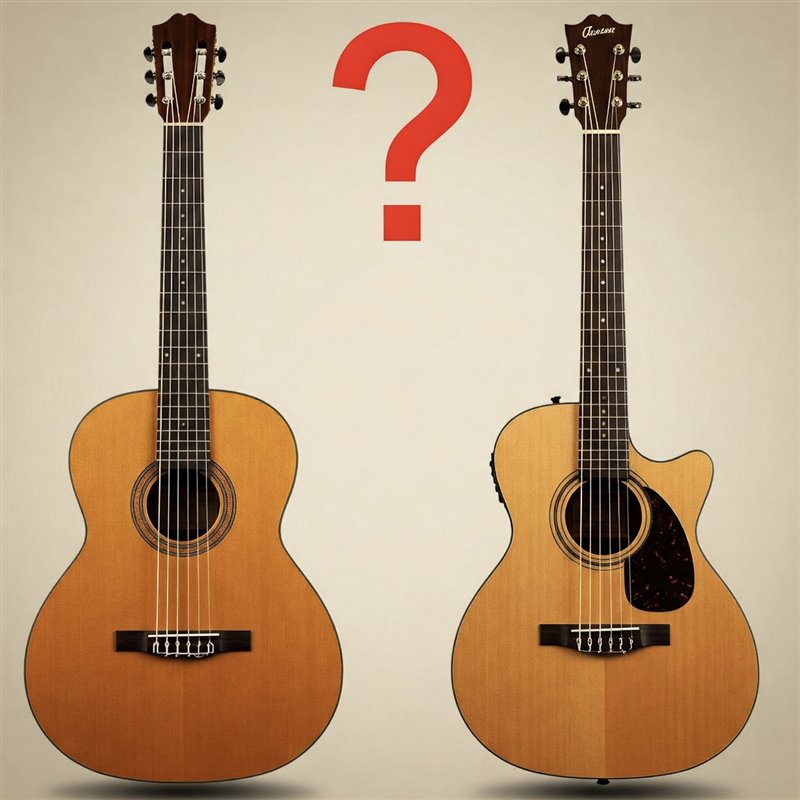A Comparative Study of Learning Difficulty Between Classical and Folk Guitar
The guitar is one of the most widely played musical instruments across cultures and genres. Among its various forms, the classical guitar and the folk (or acoustic steel-string) guitar are two of the most popular choices for beginners. However, despite their similarities in structure and tuning, the learning processes and technical requirements for each differ significantly. This article explores the relative difficulty in learning classical guitar compared to folk guitar, focusing on technique, physical demands, and educational context.
Classical guitar is traditionally associated with formal training and structured pedagogy. It is typically played using fingerstyle technique, requiring each finger of the right hand (for right-handed players) to be independently coordinated. Students are expected to develop precise tone control, dynamic expression, and articulation, often through classical repertoire and reading standard musical notation. Additionally, classical guitar posture is strict: players must hold the guitar on the left leg, often with a footstool or support, to facilitate accurate finger placement and control.
The fingerboard of a classical guitar is also wider than that of a folk guitar, making it more challenging for beginners to stretch their fingers across the frets, particularly when forming chords or playing complex passages. While the nylon strings used in classical guitars are softer and gentler on the fingertips compared to steel strings, the precision required in finger placement can offset this physical comfort.
In contrast, the folk guitar—commonly used in pop, rock, country, and folk music—is generally seen as more accessible to beginners. Its narrower neck and use of plectrum (pick) or simplified fingerpicking techniques allow for a quicker grasp of basic chords and rhythmic strumming patterns. Furthermore, folk guitarists often learn through chord charts and tablature rather than formal sheet music, making the learning process less intimidating for self-taught learners.
The nature of the music associated with each guitar type also contributes to perceived difficulty. Classical guitar emphasizes solo performance and interpretation of written compositions, requiring musical literacy and discipline. Folk guitar, on the other hand, is often used in accompaniment, group playing, or songwriting, which offers more immediate gratification and creative flexibility.
In conclusion, while the classical guitar offers a rich, expressive medium for musical development, it generally demands more technical discipline, formal study, and physical coordination than the folk guitar. For this reason, many beginners perceive the classical guitar as more challenging to learn, particularly in the early stages. Educators and learners should consider these differences when choosing an instrument to align with their goals, musical interests, and preferred learning styles.

← Back to Guest Book
Other Topics
Admin
Explore alternative tunings for classical guitar! Try different tuning options at
https://...
Posted on: 2025-04-27 00:12:51
From: 101.51.42.53
Read more
Admin
Fender FA-15N 3/4 Nylon Acoustic Guitar Review
The Fender FA-15N 3/4 Nylon is a compact and affordable classical guitar designed especially for beginners, young players, and those seeking a...
Posted on: 2025-04-29 01:01:50
From: 180.180.28.188
Read more
Admin
Taylor 110ce-S Dreadnought: A Sound Investment for Acoustic-Electric Guitar Enthusiasts
When searching for the ideal acoustic-electric guitar that balances tradition with reliable performan...
Posted on: 2025-05-20 20:51:00
From: 101.51.43.20
Read more
Admin
Create custom guitar fretboard diagrams easily! Try the tool at
https://www.midlif...
Posted on: 2025-04-26 20:17:20
From: 101.51.42.53
Read more
Admin
A Structured Approach to Learning Classical Guitar: From Beginner to Proficient Level
Abstract
This article outlines a systematic approach to learning classical guitar, from the beginn...
Posted on: 2025-05-07 19:40:30
From: 1.47.129.116
Read more
Admin
Simulate guitar fretboard sounds! Click notes to play with the simulator at
https://www...
Posted on: 2025-04-26 20:33:55
From: 101.51.42.53
Read more
Admin
Yamaha NTX5 Nylon String Guitar – Modern Tone Meets Performance Power
The Yamaha NTX5 is a premium nylon-string acoustic-electric guitar built for serious performers and adventurous players...
Posted on: 2025-04-29 01:18:21
From: 180.180.28.188
Read more
Admin
How to play C minor chord on a guitar: The image shows a C minor chord on a guitar. The horizontal lines represent the strings (E, B, G, D, A, E from top to bottom), and the vertical lines are the fre...
Posted on: 2025-04-27 08:20:27
From: 118.174.163.65
Read more
Admin
Why the Yamaha F310 Is the Best Beginner Folk Guitar The Yamaha F310 is widely considered the best folk guitar for beginners because it combines quality, comfort, and affordability. Its slightly small...
Posted on: 2025-04-28 06:13:53
From: 101.51.38.193
Read more